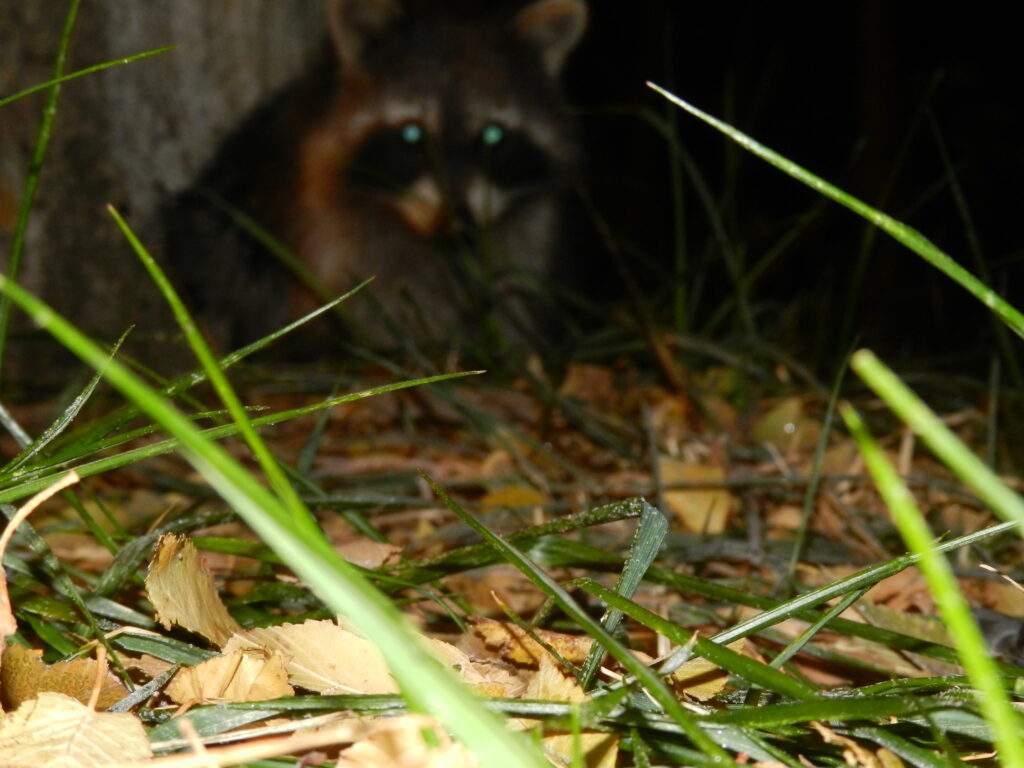From our perspective Kansas can be divided in halves with McPherson serving as the point of delineation. Flat plains, sparse natural vegetation and frequent cloudless skies characterized southwest Kansas; “rolling hills,” some natural vegetation and cloudy skies outnumbering cloudless skies greeted us in the northeast. I placed “rolling hills” in parentheses to emphasize the description as a matter of perspective. From my perspective as a New England native I did not notice rolling hills, but according to the “Flint Hills” billboard we spotted along our route they apparently were there.
In addition to natural vegetation we encountered some natural wildlife in the Maxwell Wildlife Refuge, namely elk and bison. A sign near the entrance warned people to stay in their vehicles. While hiking thousands of miles over wilderness I apprehended the potential dangers of bears and poisonous snakes, but this was the first time we kept an eye out for potentially stampeding ungulates.
Our most interesting wildlife encounter, or at least the most intimate, came the night before we entered the preserve and the day after we left McPherson. We set up our tents near an outhouse for the McPherson State Fishing Lake. The campground was deserted by humans, but not by the coyotes, geese and woodpeckers that noisily announced their presence. We also met one annoyingly persistent raccoon.
Here is the original account of my encounter with Rocky Raccoon.

I forgot to mention that during the previous week we twice stayed at the homes of trail angels. A UMC pastor hooked us up with Karen and Tony, who provided their RV for our guest lodging. They were concerned about us hiking during hunting season and bought us, including Ky, orange vests to wear. This week was a good time to put them to use as we encountered a group (flock? coven? herd? gaggle?) of hunters along our route.
As usual throughout the plains we most often encountered domesticated animals. Our tendency to chat with anyone we met along the way extended towards these four-footed acquaintances. To horses or cows I would ask how they were doing. Horses often came running over in a way that I pretended meant they wanted to socialize, but probably meant they hoped for an apple. The cows just returned a ponderous gaze, as if measuring their thoughts and words precisely before replying, though they never did.
One photo of Cindy sitting on the leeward side of a hay bale reminds me of a special moment during this stretch. She still was not the “Gabby Galvin” of old, but she was talking a little more as we hiked. Shortly before we stopped by the hay bale Cindy blurted out: “I feel myself getting better!”
Some of our old dynamic was returning. During another break I took a picture of her with Cheez-its dust all over her face, with the obnoxious intention of posting the photo for all to see. This was another good sign as our normal relationship contained a playful element, at least from my perspective, perhaps Cindy might suggest childish for me instead.
We were eminently ecumenical in our church lodgings across the country. Our itinerary of town stops this week included stays at the First Baptist Church in Durham, the United Methodist Church in Herrington and several nights at a United Church of Christ camp in Council Grove. Fitting to this ecumenical theme, we spent the final night of this week in the home of Gwen Crane, secretary for the UMC in Osage City, who filled us in about the ministerial alliance called ECAT, the Ecumenical Christian Action Team. Like the Helping Hands Ministry in Larned, ECAT bands together to assist those in need from Osage City.
Both ECAT and Helping Hands contradict in some measure the fire and brimstone sermon we heard at the UCC church service we attended in Council Grove. The “believe in humanity” message in presentations I delivered across the country derives from the second great commandment of “love the neighbor.” “Fire and brimstone” sermons focus on the first commandment of “love God.”
Christianity champions both commandments, but the relative importance of each differs between denominations and congregations. 1 John 4 challenges us to love others and essentially “believe in humanity” first, as does the first three Gospels, but the historical account of King David and some other parts of the Bible undermines this message. Writing now with hindsight, this conflicted tension in theology repeatedly comes up along our journey. Stay tuned.
Council Grove provided us with more fuel for “believing in humanity.” A sheriff once again stopped us as we hiked into town but, in contrast to our approach to Larned, this time passing motorists were concerned for us rather than about us. With midday temperatures in the thirties the sheriff asked if we were warm enough and if we had a place to stay that evening. We told him about our church camp destination and about our invitation to eat at the historic Hays House that evening, as guests of Don Peterson, an extremely spry octogenarian. The inspirational kindness of Council Grove was capped by interviewing the church camp director, Sara Shaw, who overcame brain trauma from a car accident to dedicate her life to serving youth.
In keeping with the public mission of our hike we had hoped to attend an annual community Thanksgiving meal in Ottawa, but learned this week that the town had stopped the event that year. Fortunately, the serendipitous arc that began when we met Andy Held at the Copper Mountain resort in Colorado was about to come to our rescue.
